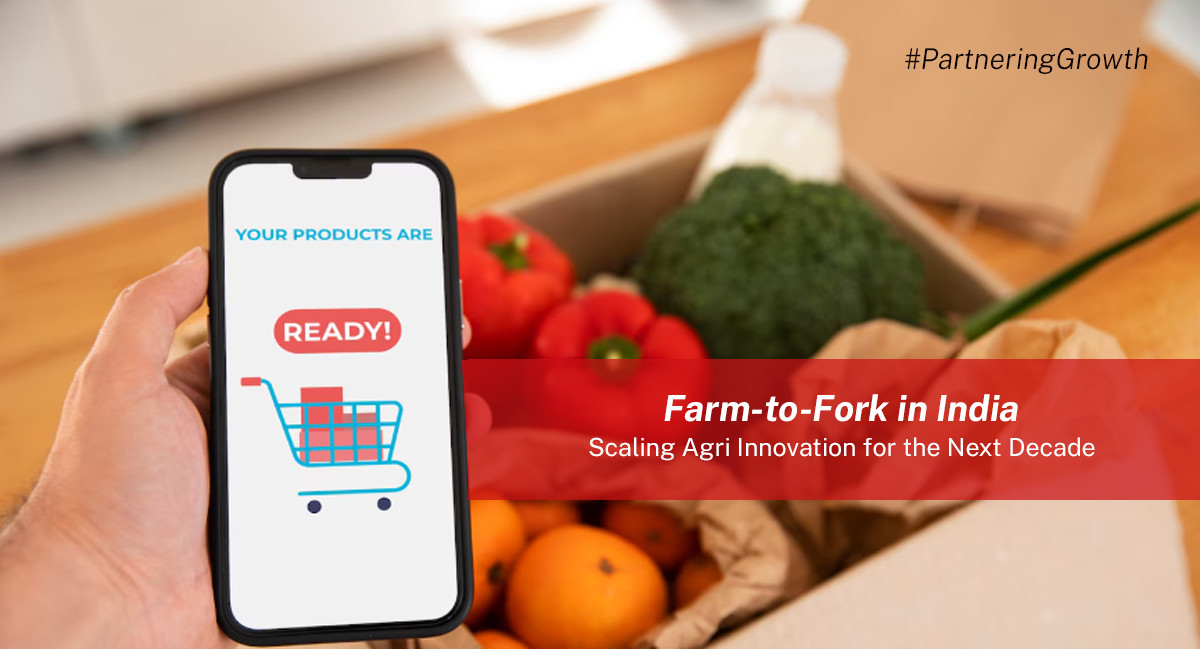


Agriculture has always been central to India’s growth story. Yet, as the population grows and consumer preferences shift, the way food is produced, processed, and delivered needs a fresh approach. The farm-to-fork model, which connects farmers directly with consumers by integrating production, supply chains, and retail, has emerged as a game-changer. In the coming decade, scaling this model will be key to ensuring food security, farmer prosperity, and sustainable growth.
What Does Farm-to-Fork Mean?
Simply put, farm-to-fork is about creating a direct, efficient, and transparent journey of food from the farmer’s field to the consumer’s plate. It reduces unnecessary middlemen, shortens supply chains, and ensures fresher produce reaches consumers while farmers earn better value for their hard work.
Why Farm-to-Fork Matters for India
India’s agri sector still faces challenges such as:
• High post-harvest losses (estimated at nearly 30–40%).
• Price gaps between what farmers earn and what consumers pay.
• Food safety and traceability concerns.
• Limited access to modern logistics and cold storage.
The farm-to-fork approach directly addresses these issues by using technology, data, and innovation to streamline the entire agri value chain.
Innovations Powering Farm-to-Fork
1. Digital Marketplaces
Apps and platforms are enabling farmers to sell directly to retailers, restaurants, and even households. This ensures fair pricing and wider market access.
2. Cold Chain Infrastructure
Investments in refrigerated transport and storage are helping reduce wastage and extend the shelf life of perishable items like fruits, vegetables, and dairy.
3. Food Traceability
Consumers today want to know where their food comes from. Blockchain and QR code-based systems are bringing transparency, allowing buyers to track produce back to its origin.
4. Agri Fintech
Digital payments, crop insurance, and easy access to credit are strengthening farmers’ participation in modern food supply systems.
5. Sustainable Practices
Organic farming, precision irrigation, and reduced pesticide usage are becoming part of farm-to-fork systems, ensuring that food is not just fresh but also safe and environmentally responsible.
Challenges to Scaling
For all its promise, scaling farm-to-fork in India requires overcoming:
• Infrastructure gaps in rural areas.
• Digital literacy challenges among small and marginal farmers.
• High upfront costs for cold storage and logistics.
• Fragmented landholdings making uniform adoption slower.
Solving these will require collaboration between farmers, start-ups, corporates, and policymakers.
The Next Decade: What’s Ahead?
Over the next ten years, India is likely to see:
• Wider adoption of digital platforms connecting farms with retail chains and homes.
• Expansion of cold storage networks into semi-urban and rural areas.
• Integration of sustainability into mainstream farming practices.
• Consumer-driven demand for organic, traceable, and responsibly sourced food.
• Farm-to-fork is not just a supply chain model. It is a blueprint for the future of Indian agriculture and food systems.
Conclusion:
The farm-to-fork journey is about more than efficiency. It is about empowering farmers, reducing waste, and ensuring healthier food for consumers. As India moves into the next decade, scaling this model will be central to building a more resilient, sustainable, and inclusive agricultural economy.
With the right mix of innovation, policy support, and collaboration, farm-to-fork can transform Indian agriculture into a sector that not only feeds the nation but also drives global leadership in agri innovation.